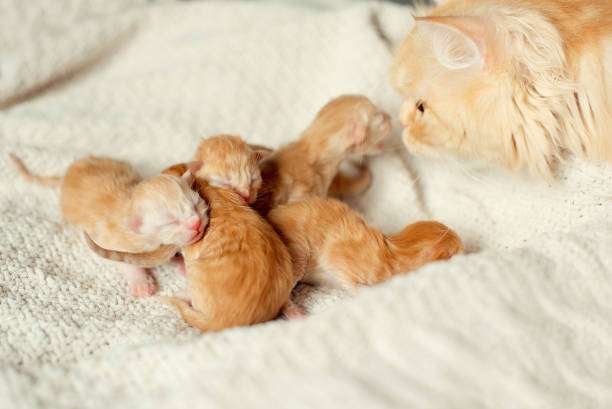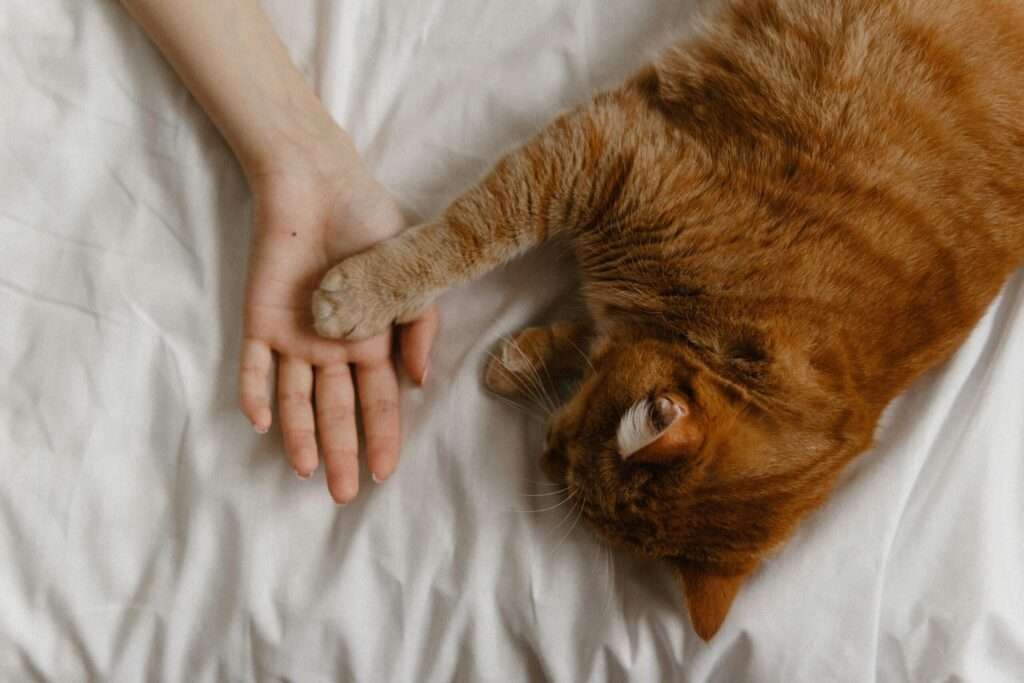Maintaining your cat’s dental health is as important as any other part of their care routine. I’m Ava Grace, and today, I’m going to walk you through how I keep my cat, Aurora, happy and healthy by making sure her teeth are in great shape. I know firsthand how tricky it can be, especially if your cat isn’t used to having their teeth brushed. But with a little patience and some helpful tips, you can make it a regular part of your cat’s routine.
Table of Contents
ToggleWhy Cat Dental Care Matters
You might not think much about your cat’s teeth, but dental care is crucial for their overall health. Aurora, my little furball, wasn’t a fan of having her teeth brushed at first. But I quickly learned that skipping dental care can lead to problems like plaque buildup, bad breath, and even more serious issues like periodontal disease. Trust me, the last thing you want is to have to deal with costly vet visits or, worse, see your cat in pain.
Start Slow and Build Trust
When I first started brushing Aurora’s teeth, I didn’t dive right in with the toothbrush. Cats are creatures of habit, and anything new can be a bit overwhelming for them. I began by simply letting her sniff the toothbrush and taste the toothpaste. I chose a chicken-flavored toothpaste because Aurora is a fan of anything chicken. The idea was to get her used to the new smells and tastes without making her feel threatened.
If your cat is anything like Aurora, they might be curious but hesitant. Don’t rush this step. Let them explore the toothbrush on their own terms. It might take a few days, but this slow introduction is key to building their trust.
Choosing the Right Tools
Having the right tools can make a world of difference. For Aurora, I use a toothbrush designed specifically for cats. It’s smaller and softer than human toothbrushes, which is perfect for her little mouth. I tried a few different brushes before finding one that worked best for us. Some people swear by finger brushes, and they can be a great option, especially when your cat is just starting out. I found that Aurora responded better to a regular cat toothbrush after she got used to the process.
As for toothpaste, it’s essential to use one made for pets. Human toothpaste contains ingredients that aren’t safe for cats to ingest, and since Aurora doesn’t know how to spit it out, I stick with pet toothpaste. The chicken flavor I mentioned earlier is a big hit in our house, and it makes the whole process a lot easier.
Creating a Positive Experience
The goal is to make tooth brushing a positive experience for your cat. Aurora was not thrilled at first, but I discovered that turning it into a bonding moment made a huge difference. I usually brush her teeth in the evening, right before her bedtime cuddle. I talk to her softly, telling her what a good girl she is, and I make sure to give her lots of praise and a treat afterward.
If your cat is particularly resistant, don’t force it. Start by just rubbing their gums with your finger or a piece of gauze to get them used to the sensation. Gradually work your way up to the toothbrush. It might take a few weeks, but with patience, your cat will start to accept it as part of their routine.
Focus on the Right Areas
When brushing, focus on the outside surfaces of your cat’s teeth. That’s where plaque and tartar tend to build up the most. Aurora has a bit of a sweet tooth (not literally, of course), and I noticed that her back teeth were the trickiest to clean. The molars, where most of the chewing happens, are usually where plaque accumulates, so I make sure to spend a little extra time there.
One trick I’ve found helpful is to use a circular motion when brushing. It’s gentler on their gums and more effective at removing plaque. Don’t worry too much about the insides of the teeth; Aurora’s rough tongue does a good job of keeping those areas clean. Focus on getting the gum line and the big teeth at the back.
Make It a Routine
Consistency is key when it comes to keeping your cat’s teeth healthy. I try to brush Aurora’s teeth every day, even if it’s just a quick once-over. I’ll admit, there are days when it’s more of a challenge, especially if Aurora is in one of her feisty moods. But I’ve found that sticking to a routine helps both of us. She knows what to expect, and over time, it’s become just another part of her day.
I understand that brushing every day might seem like a lot, but even doing it a few times a week can make a big difference. On days I can’t do a full brush, I’ll at least give him a dental treat or use a dental wipe to help keep his face fresh.
Regular vet check-ups
Even with the best care at home, it’s important to have your cat’s teeth checked by a veterinarian regularly. Aurora goes in for her annual check-up, and the vet takes a close look at her teeth. Sometimes, despite our best efforts, tartar can still build up in hard-to-reach places. Hence professional cleaning under anesthesia is required from time to time.
Aurora had to have a cleaning last year, and I was nervous about her going under anesthesia. But the vet assured me it was the best way to keep her teeth and gums healthy. The procedure went smoothly, and afterward, Aurora’s breath was noticeably fresher, and her gums looked much healthier.
Know the Signs of Dental Problems
One of the things I always keep an eye on with Aurora is any signs of dental issues. If she starts to have bad breath that doesn’t go away, drools more than usual, or has difficulty eating, those are red flags. I remember once, she suddenly became less interested in her kibble, and it turned out she had a small gum infection. A quick trip to the vet and some antibiotics cleared it up, but it was a good reminder of how important it is to be vigilant.
If you notice any of these signs in your cat, don’t wait to see if they’ll go away on their own. Dental problems can escalate quickly, and the sooner you address them, the better.
Consider Dental Chews and Toys
In addition to brushing, I’ve found that dental chews and toys can be a great supplement to Aurora’s oral care. She loves to chew on certain toys, and I make sure to pick ones that are designed to help clean her teeth. These toys often have textured surfaces that help scrape off plaque as she plays. It’s a fun way to help maintain her dental health while also keeping her entertained.
If you’re looking for a good dental chew or toy, make sure it’s designed specifically for cats. Some of them are infused with dental care ingredients that help reduce plaque and tartar. I also like to rotate her toys to keep her engaged and interested in her dental routine.
Final Thoughts
Caring for your cat’s teeth is a commitment, but it’s one that pays off in the long run. By making dental care a part of your daily routine, choosing the right tools, and being patient with your cat, you can help them maintain healthy teeth and gums for years to come.
I hope these tips help you and your cat as much as they’ve helped me and Aurora. Remember, it’s all about consistency and making the experience as positive as possible. Your cat’s dental health is just as important as any other aspect of their well-being, and with a little effort, you can keep those pearly whites in great shape!
FAQs
Why is cat dental care important?
Cat dental care prevents plaque buildup, bad breath, and serious issues like periodontal disease.
How should I start brushing my cat’s teeth?
Start slow, allowing your cat to get used to the toothbrush and toothpaste by sniffing and tasting them.
Which toothbrush and toothpaste should I use?
Use a cat-specific toothbrush and pet-safe toothpaste, such as chicken flavored, to ensure safety and comfort.
How can I make tooth brushing a positive experience for my cat?
Make it a bonding moment by talking softly, praising and giving treats afterwards.
Which areas of my cat’s teeth should I focus on?
Focus on the outside surfaces and the back molars where plaque and tartar tend to accumulate.
How often should I brush my cat’s teeth?
Ideally, brush your cat’s teeth daily, but brushing a few times a week can still make a difference.
What if my cat refuses to brush its teeth?
Start by gently scrubbing their gums with your finger or gauze before moving on to the toothbrush.
How do I know if my cat has dental problems?
Watch for symptoms such as bad breath, excessive bowel movements, or difficulty eating, which may indicate dental problems.
Are regular vet check-ups necessary for dental health?
Yes, yearly vet check-ups help catch dental issues early, and professional cleanings may be needed.
Can dental chews and toys help maintain my cat’s teeth?
Yes, dental chews and toys designed for cats can supplement brushing by reducing plaque while they play.







